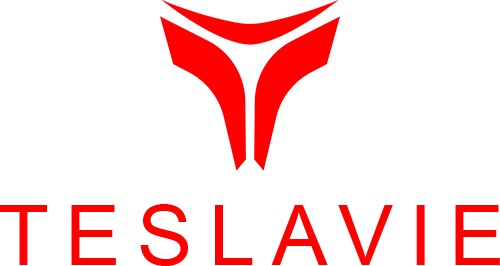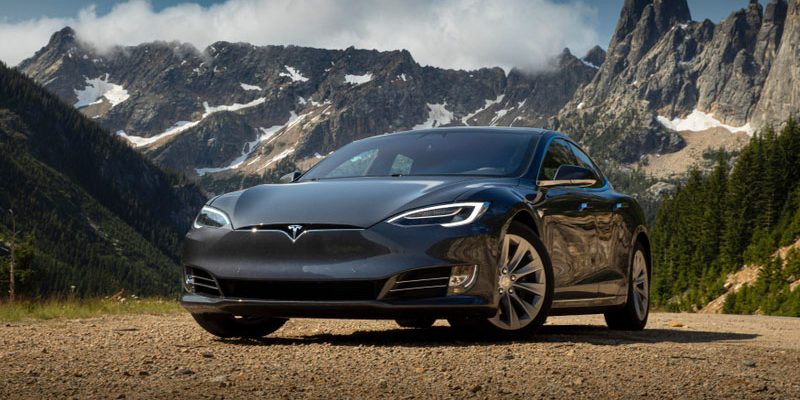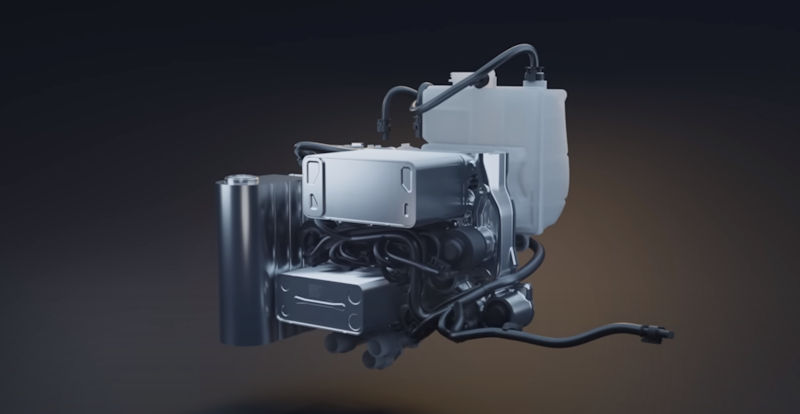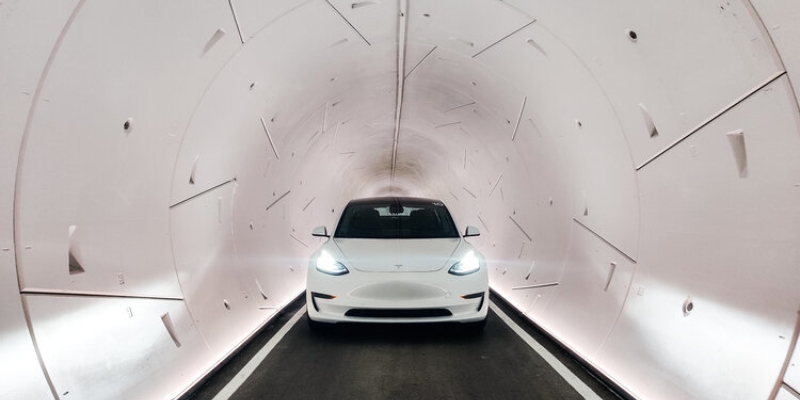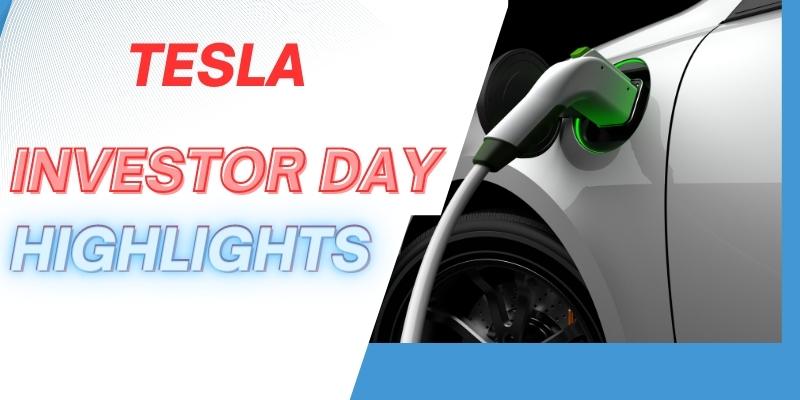The Tesla Model S was the first car that Tesla started producing and has had a lot of changes and updates over the years. You can find all important (and some less important) updates down below in the table in chronological order. This data is provided by https://tesla-info.com/ and is our source for future updates and changes as we add these to the list. This list focuses mostly on hardware changes, but there are some Software updates mentioned in the list as ‘SW’. Detailed software changes can be found here.
Note that the list only lists contains actual changes made and does not include announcements.
List updated on 1st of August 2023.
–
| 2012 |
| Founders Series Model S cars begin production in June 2012. |
| Technology Package option for Model S, consisting of convenience lighting, keyless entry, homelink, rear camera, xenon headlamps, cornering lights, fog lamps, power rear liftgate, navigation, chrome visual cues on rear diffuser and front air intakes. |
| Adjustable height air suspension became available for Model S as an option. |
| Supercharger capability, initially an option became standard on the Model S 60. |
| Optional for third row rear-facing seats. |
| Optional sound system upgrade, originally called Sound Studio, later called Ultra High Fidelity Sound and then Premium Sound. |
| Standard interior is black leatherette / cloth and optional seating cover material is Nappa Leather. Colours are black, tan and grey. Steering wheel is black. Standard dash trim is Piano Black. |
| Optional Panoramic roof upgrade. |
| Optional Carbon Fibre rear spoiler. |
| 2013 |
| Model S P85+ (Performance Plus) with staggered 21” Performance Turbine wheels (silver or grey), Suspension dynamics were improved for performance and comfort via upgraded dampers, bushings and stabilizer bars. Brake callipers were initially black changing to red a short while later. |
| Optional European Security becomes available for European Model S only. |
| The standard textile upholstery became available. |
| Heated front seats became available. |
| Memory seats became a feature of the Tech Package including mirror and steering wheel position as part of the Driver Profile. |
| Generation 2 door handles started being fitted. Many Model S cars were retrofitted with the new version of the door handles during yearly service appointments or when maintenance issues arose. A known weakness and even the Gen 2 handles have had poor reliability. |
| Option to have coil suspension on Model S P85. |
| Option to have front and rear parking sensors. |
| Option to have a black and not body coloured roof. |
| Folding, heated side mirrors added to the Tech package. |
| 2014 |
| Driver’s instrument cluster display resolution improved to 1920 x 720. |
| Model S P85 and P85+ models replaced by the P85D. The frunk became smaller on dual motor cars (pre facelift). There was some controversy over Tesla’s performance metrics as they quoted motor power when the battery could not deliver full power to both simultaneously, and 0-100 km/h times quoted with 1 foot roll out on the Performance cars. |
| Model S 85D launched with a smaller rear motor to the P85D. The 85 single motor car continues. |
| Right Hand Drive Model S introduced. |
| The rear door hinges were changed allowing for a wider opening and easier entry to the rear seats. |
| The black roof option was discontinued. |
| The Sub-Zero Weather Package was added as an option providing heated front and rear seats, heated side mirrors and a heated wind-shield area to prevent the wipers freezing. The heated steering wheel arrived later. |
| The Parcel Shelf, formerly a stand-alone option was changed to standard equipment. |
| The introduction Gen 1.5 seats with a softer and more comfortable lower front seat cushion. |
| The screen resolution of the instrument cluster (Driver’s Dashboard) was upgraded from 1280 x 480 to 1920 x 720. In addition, the chrome bezel or surround was changed in design. The thick lower portion was thinned out and modified. |
| An additional power circuit was added reducing the risk of vehicle damage due to improperly installed third-party equipment. |
| A black alcantara headliner was added as an option. |
| The Next Gen seating option became available in the Model S P85D model which offered much better side support. These were made by Recaro. |
| Premium Interior Lighting (LEDs) became part of the Premium Interior Package Option. |
| Yacht Flooring became standard. |
| A heated steering wheel was added as a component of the Subzero Weather Package. |
| Larger sun visor size and a larger vanity mirror first appeared on the dual motor Model S. |
| Parking Sensors become part of the Tech Package. |
| AutoPilot hardware, known as Driver Assistance Features, were added via the “Tech Package with Autopilot” option. |
| TACC (Traffic Aware Cruise Control), Lane Departure sensors and Speed Assist (Speed Limit recognition) were added. The control stalk was changed to a new version. The steering column added a vibration as part of the Lane Departure warning. |
| Tyre/Tire pressure sensors (TPMS) design was changed. The old and new are not cross compatible. The in-car display also started showing individual tyre pressures. |
| An electrically opening, self-closing charge port door first appeared on the dual motor Model S in the US. It came to Europe and rest of the world a year later. |
| The Air Suspension was upgraded to the Smart Air Suspension with a height adjustment feature. The car changes height based on speed and can remember locations where manually overridden. |
| Frunk redesign from 2 to 1 catch, also a change in 12V battery (cars with 1 catch frunks are easier to replace). |
| Trim was refreshed late in the year including alcantara trim to the roof if the panoramic roof was fitted and has better sound insulation. |
| 2015 |
| The CHAdeMO adapter began shipping. It would later become available in Europe and for the Model X. |
| Executive Rear Seats (ERS) became an option, which comprised of 2 rear seats and a centre console. These seats didn’t fold and was not that popular an option. |
| P85D coil suspension became available. |
| Next generation seats become available on non P Model S models. |
| Model S 70D was introduced, replacing the Model S 60. |
| The Tech pack was dropped and combined with the Premium Interior Pack, which was also renamed to the Premium Package. It included ambient interior lighting, power liftgate, lighted door handles, cornering lights and the chrome accents in the front and rear bumper. |
| The panoramic roof design was updated, you’d be hard pushed to notice the difference but it reduced the incidents of leaks. |
| Autopilot Convenience Features Option, later known as AP1, becomes a real thing based on Mobileye technology – the hardware having been included on the car for a while. Auto steer and TACC (Traffic Aware Cruise Control) were the main features together with auto parking. Lane change and summon would be added at a later date via a software update. |
| A range upgrade to the 85 became available in the late summer as a result of a silicon coating in the battery creating the 90. This resulted in a forecasted 6% and in reality a 3% increase in range. This was not entirely successful with early cars suffering some initial degradation and giving little benefit over the 85 batteries. This also later became a model in its own right and the P90D cars, especially with Ludicrous Mode performed noticeably better than the 85 batteries. |
| Ludicrous Mode was introduced in August as a result of the introduction of a higher rated fuse, available as a paid retro fit to the P85D and as an option on the P90D replacing the previous Insane Mode. |
| The 21″ wheels flipped from staggered to a square set-up. The Model S P90DL with the 21″ wheels then changed back to a staggered set-up where the rears are slightly wider. |
| The next generation rear seat reverted to a flatter bench seat making folding flat easier. |
| The alcantara headliner became part of the premium pack and not a standalone option. |
| Executive Rear Seats dropped. |
| The cruise control stalk design changed, removing the small button on the stalk end. |
| Parking Lines were added as an overlay to the rear camera display. |
| 3G cellular connectivity was upgraded to 4G LTE. The option can be retrofitted at a cost and included in an MCU2 upgrade. |
| Launch Mode was added as a new performance function to P85D and P90D Model S cars. |
| 2016 |
| 85 battery option dropped having been replaced by the 90. |
| Model S and Model X 60D were introduced as software limited 75 batteries. |
| Model S was face-lifted with a new rear diffuser, painted side skirts, new LED headlights, true HEPA air filtration system including bioweapon defence mode (if the premium pack was optioned, this also reduces the size of the frunk on all models include RWD), the front radar sensor was moved, the 22kw twin charger option was dropped, replaced by a 17kwhigh power charger, and a smaller frunk on all cars to make space for the HEPA filter. The most notable change however was the new front end which has design queues similar the front end of the Tesla Model X. |
| Model S P100D introduced superseding the P90D. The P100D initially had ludicrous as an option. |
| Mobileye Autopilot dropped and replaced with Tesla’s own system, the hardware known as AP HW2. The first software package was called Enhanced Autopilot (EAP). The software took some time to be delivered through over the air updates. |
| Full Self-Driving (FSD) capability became an option although even in 2021 it offers virtually nothing beyond Enhanced Autopilot (EAP). |
| New seating choice called Premium Seats which are offered in White, Tan and Black leather including a cooling feature with air flow capability as well as adjustable headrests. Around the same time the centre console had rear cup holders and USB ports added. |
| Solid glass roof introduced as an option. |
| A new vegan interior option and next-gen premium in-house seats for all models. |
| 2017 |
| Interior options start becoming bundled as part of the basic car specification. |
| Tesla improves performance of the 75D which for many cars could be performed by a software update – became known as Uncorking. 60Ds which were software limited 75Ds could also be uncorked if they upgraded the battery first. |
| Smart Air Suspension became standard across all Model S models. |
| Unlimited free supercharging became a referral benefit which did not transfer to the second owner. |
| A number of EAP features finally arrived including basic summon. |
| 2018 |
| MCU upgraded to the MCU2, a faster system. This also resulted in the loss of AM radio |
| Wifi changed to also support 5GHz. |
| Premium pack, Premium Hifi and Cold Weather become standard on all models. |
| Bezel/surround colour changed to a smoked/grey colour. |
| Tesla introduce Pin to Drive, an optional security feature. |
| AP Hardware updated to HW2.5 |
| The glass roof (not the panoramic opening roof) on the Model S became standard. The metal roof was dropped. |
| Rear facing seats were dropped as an option. |
| Dashcam introduced for those with HW2.5 and above. |
| Model S and Model X key fobs changed to a version 2 which can be reprogrammed. |
| 2019 |
| AP hardware updated to HW3 on Model S and Model X. It is unclear if this also applies to Model 3 as all Model 3s report the HW2.5 config code. |
| Enhanced Autopilot (EAP) features split – TACC and Lane keep became Autopilot (AP) and got included in the standard car spec. The remaining features moved to Full Self-Driving (FSD). |
| Smart Air Suspension changed to an Adaptive Air Suspension system on the Model S and Model X. |
| The panoramic roof which was finally dropped as an option. It was removed from the configuration studio in 2018, but available off system. |
| Free unlimited supercharging stopped for all cars, then reintroduced on the Model S and Model X for the first owner only. |
| EU/Asia chargers updated to include CCS capability. Retrofit to older cars also became available. |
| V3 superchargers launched and increases to V2 supercharger speed. |
| Model S and Model X front and non P rear motors changed to the permanent magnet version first seen in the Model 3. This improved the range of the Model S and Model X. This got combined with the Adaptive Air Suspension system, which has been named Raven. |
| As part of the motor change and Raven, model numbers on Model S and Model X changed to model names eg Standard Range, Long Range and Performance etc. Tesla also dropped publishing many of the detailed configuration codes on their new car listings. |
| Sentry mode introduced for those with HW2.5 and above. |
| The European UMC is changed to a 16A single phase version although connectors are available to make it a 32A single phase. |
| Navigate on Autopilot became available. |
| Pedestrian sound generator added for some markets. |
| Autopilot HW3 upgrades being selectively performed for cars with FSD option. |
| Version 10 introduced including, subject to region and hardware, Smart Summon, Karaoke, Music and Podcasts and video streaming to the browser. Scheduled departure also added. |
| 5% Power increase and 1 foot driving for permanent magnet cars only, ie Raven Model S and Model X, and Model 3. |
| Ability to read and respond to text messages on all models. |
| Autopilot enhancements regarding variable speed depending on adjacent lanes and stop sign identification. The ability to use these features typically varies by country. |
| 2020 |
| Started to convert EAP to AP on CPO (Certified Pre-Owned) cars, and changed premium connectivity on used cars to a subscription model. This follows the previous changes to supercharging which was also removed from all used cars sold by Tesla. |
| Increased the battery range of the Model S and Model X Long Range creating the Long Range+. The increase is relatively small and buyers should be aware that this coincides with Tesla changing the warranty documentation to say they can remove range without penalty through a software update. |
| Upgrade option to MCU2 from MCU1 allowing owners to then have the benefits of the additional MCU2 features. This is initially linked to those who also have FSD, as some of the driving benefits/visualisations of FSD require the MCU2 hardware. |
| Performance boost for Raven Performance models and new Cheetah stance launch. (SW 2020.12.5) |
| A new suspected deep sleep mode to preserve battery life when the car is being left. (SW 2020.12.5) |
| Autopilot now stops at red lights (SW 2020.12.6 – country specific). Early reports suggest it stops at red and green lights. |
| Side cameras when in reverse (SW 2020.26). The side cameras now appear beneath the rear camera when selecting reverse. These cameras point backwards and not down, so they do not operate as a surround view type camera setup. |
| Enhanced suspension options and dynamic brake lights. (SW 2020.32.1) |
| Plaid announced and order book opened, although not due until late 2021 at best. |
| New battery with slightly better range and performance (code BTXA). |
| Improved security with the introduction of Multi-Factor Authentication (MFA). |
| Boombox feature added (the car needs to have the external speaker) and other tweaks as part of the end of year release. |
| 2021 |
| Plaid+ dropped before being produced via a Tweet. Musk cites the Plaid is as good as you could want, a little ironic given that argument could have been applied for some time to the other models. |
| Subscription version of FSD now announced in the US. Up to date info can be found on here. |
| Tesla introduces driver testing before allowing the deployment of the latest version of FSD. |
| Supercharging network being trialed in some countries with other makes of car. |
| 2022 |
| A native CCS port has been incorporated into the rear light cluster in the 2021 Model S for markets that use CCS. |
| Small detail changes seen on the MS believed to be on the MX including a new charge flap design (presumably compatible with native CCS for Europe) and rear light details and trim. Headlights also appear updated. |
| The bezel around the rear screen has been made much smaller. |
| The amount of DDR memory in the MCU was increased to 16GB. |
| 2023 |
| The option to specify a round steering wheel, and not just the yoke is now available. Brakes on the Plaid have also been updated. |
| Autopilot HW4 changes formally applied for as part of type approvals. This includes some technical changes to the area around the rear view mirror and forward facing cameras including new housing, new mirror mounting, dipped/high bean sensor and GNSS antenna. It is also expected to include a reduction to 2 (from 3) cameras although with a much higher resolution. Updates to the computer are also included. |
| Changes to the maximum speed and braking systems to allow for the carbon ceramic option on both the MS and MX. The inverters will also be updated. |
| CCS adaptor (also requiring a service visit for associated changes) has been released in the US. Only the MS and MX initially. This type of adapter has been available in Europe and other regions for a number of years before Tesla changed to deliver all cars with a native CCS port. |
| Ultra Red colour released for the Model S and Model X, replacing Multi-coat Red, which in turn is slowly being replaced with Midnight Cherry Red, although at the time of launch was only available on Model Y cars made in Germany. |
| The glass roof is being updated to be clearer. |
| Tesla announce they will not be bringing the refreshed Model S or Model X to RHD markets. |
| Tesla starts to introduce cameras that can be physically wiped clean. The guidance previously was to only spray with water as contact could scratch the glass. We believe this is part of the HW4 update. |
| … |
–
Abbreviations
AP is Autopilot
EAP is Enhanced Autopilot
SW is Software (update)
HW is Hardware
TACC is Traffic Aware Cruise Control
HEPA is High Efficiency Particulate Air (filter)
CCS is Combined Charging System
UMC is Universal Mobile Charger
FSD is Full Self-Driving
MFA is Multi-Factor Authentication
–
Lists of the other Models:
Tesla Model 3 – Changes and updates list
Tesla Model X – Changes and updates list
Tesla Model Y – Changes and updates list
